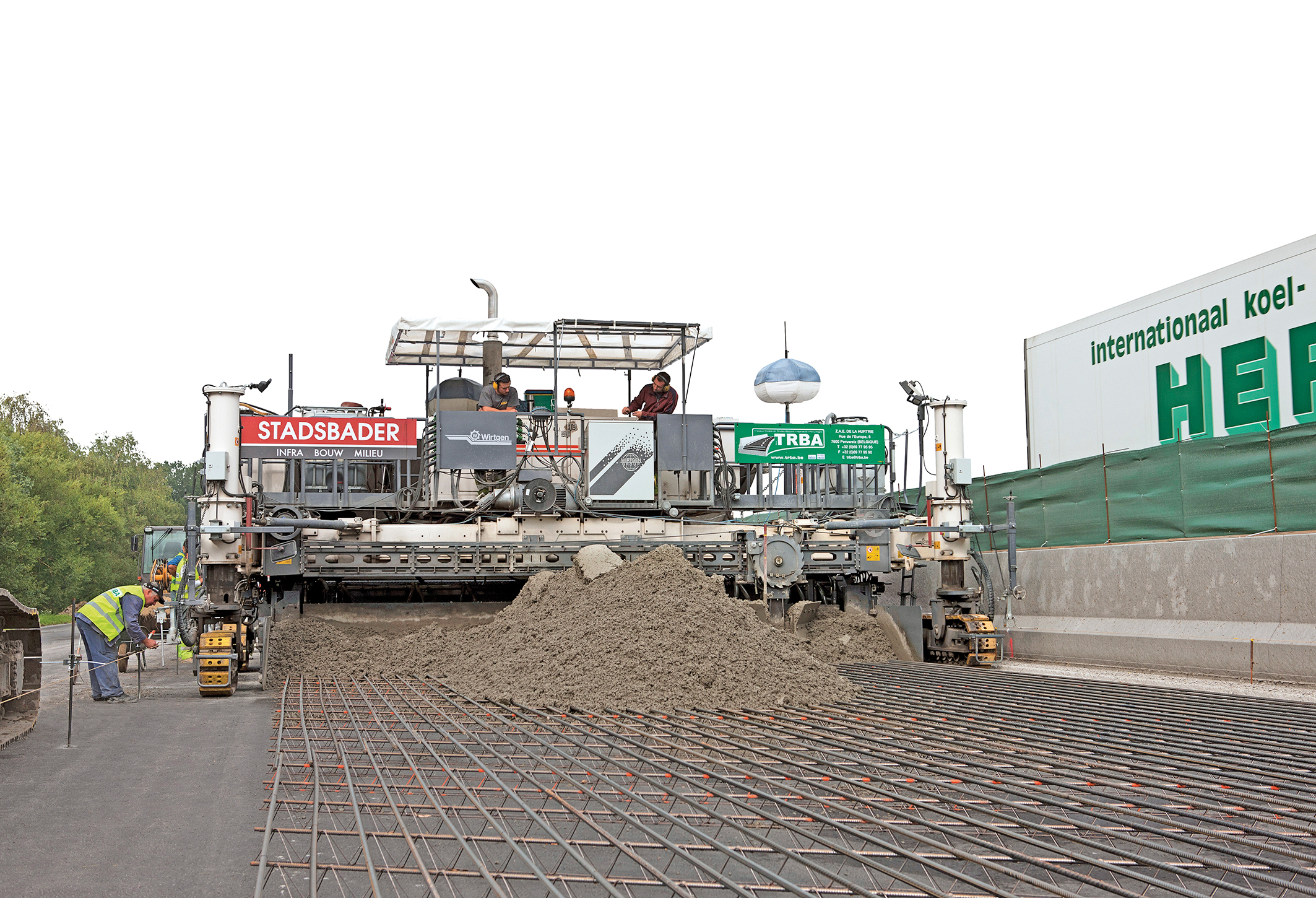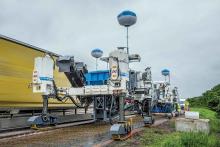
The Belgian city of Antwerp is regarded as the world’s main centre for diamond cutting and the diamond trade. Located on the Atlantic Ocean, it is the third largest seaport in Europe, and is the ideal gateway for goods shipped to and from Europe.
However, to cope with ever-increasing freight traffic volumes in the greater Antwerp area, it is of vital importance to drive the development of infrastructure and improve maritime accessibility.
High-level infrastructure measures are already well underway in Antwerp, with the world’s largest sea lock scheduled for completion in 2016.
Another major project is the renewal of a main traffic artery in the Belgian transport network, the heavily-trafficked E17 motorway that connects Antwerp with the French city of Lille via the Ghent intersection. An average 50,000 vehicles/day, 20% of which is truck traffic, use the E17.
Paving of a new concrete carriageway of an 11.6km stretch of E17 was the most important part of the entire project, and it used a construction method specific to Belgium: CRCP (Continuously Reinforced Concrete Pavement).
CRCP is said to be an extremely cost-efficient method, especially in the long term, and according to
In 1946, Belgium was the first country in Europe to use the CRCP construction method.
At the start of construction, the motorway still consisted of the original, old concrete surface dating back to the mid-1970s. It was quite simply worn out, and no longer able to cope with the tremendous loads caused in particular by heavy vehicle traffic.
The sequence of operations involved demolishing the original concrete pavement; milling out the asphalt layer below; paving a hydraulically bound base course; paving a new asphalt layer; paving a central concrete safety barrier; laying a reinforcement for the concrete carriageway, and then paving the concrete carriageway.
With an extremely tight schedule, an area of 340,000m² had to be rehabilitated in six months. This involved a bottom concrete layer (hydraulically bound base course) of 62,500m³; 74,000tonnes of asphalt; 5,400tonnes of reinforcement and 72,750m³ of concrete.
A wide range of construction machines from the Wirtgen Group was used on the project.
After removal of the old concrete pavement, Wirtgen 2000 and W 2200 large milling machines, fitted with the Wirtgen LEVEL PRO levelling system, milled out the asphalt layer below.
After removing the old asphalt layers the new hydraulically bound base course was spread and paved using bulldozers. It was compacted, and then the 5cm thick asphalt separating layer serving as the base for reinforcement and concrete carriageway was paved using
“We have chosen a continuously reinforced concrete pavement because here in Belgium, we have many years of experience with this type of road pavement,” says Luc Rens, managing director at EUPAVE (European Concrete Paving Association).
“CRCP offers offers several advantages compared with bonded concrete slabs. First of all, there are no transverse joints. This improves the overall riding comfort and reduces costs for the road authorities. In addition, CRCP can be overlaid with a thin bituminous asphalt layer after 20-25 years without cracks posing a problem, which turns them into composite pavements.”
After analysing a number of different concepts, the company in charge of the concrete paving phase of the project decided to use the Wirtgen SP 850 slipform paver, which offers extended paving widths and is equipped with a finishing beam and super smoother.
A continuous longitudinal and transverse reinforcement consisting of ribbed steel bars was laid on the asphalt pavement produced by the Vögele pavers. This was followed by the SP 850 which paved concrete slabs at a working width of 7.4m and thickness of 25cm.
The SP 850 worked for three shifts, 24/7, and the result was 291,000m² of concrete carriageways.










